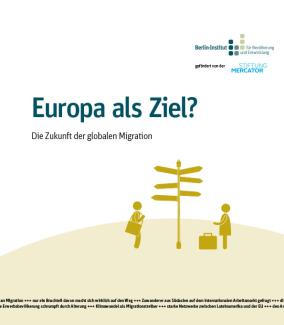Migration
Education as a central driver

The authors write that people’s decision to migrate depends on many factors. Top on the list are the fundamental desire to live a different life and the search for freedom, security and a better income. Most people move only a short distance, often within their own countries or to a neighbouring country. Only a small portion of people travel to a different world region, like Europe, the researchers emphasise.
They give an overview of the factors that lead people to emigrate and identify large population growth as the most important factor. With rising numbers of people, the competition increases for food, housing, jobs and so on. This trend is affecting above all the countries of sub-Saharan Africa and parts of the MENA region (the Middle East and North Africa).
The authors write that education is another central driving force for migration. The higher a person’s education level, the greater the likelihood that he or she will be able to build a new life somewhere else. Usually it is better-educated people who decide to emigrate. The researchers do not consider political attempts to address the “root causes of migration” through development very promising: “This is because development and better income opportunities will initially enable more people to organise and finance a migration.” However, they write that education does slow migration over the longer term. Another important factor, according to the study, is the desire for economic improvement. However, the likelihood of migration across national borders only increases starting at a per capita gross domestic product of the equivalent of $ 2,000 per year, which the poorest countries are nowhere near reaching.
Other driving forces for migration include conflicts and political factors, as well as environmental changes that have a serious impact on living conditions. According to the researchers’ analysis, networks in the diaspora and a country’s migration policy also encourage people to move. People who have already migrated and built networks in their host countries attract more migrants. Countries’ policies towards immigrants can also encourage or limit migration. Since the EU has sought to stem migration following the large influx of refugees in 2015, the number of people seeking protection has fallen dramatically.
According to surveys, 750 million people – 15 % of the world’s adult population – could imagine moving to a different country. At 33 %, the desire to migrate was highest in the countries of sub-Saharan Africa. (sb)














